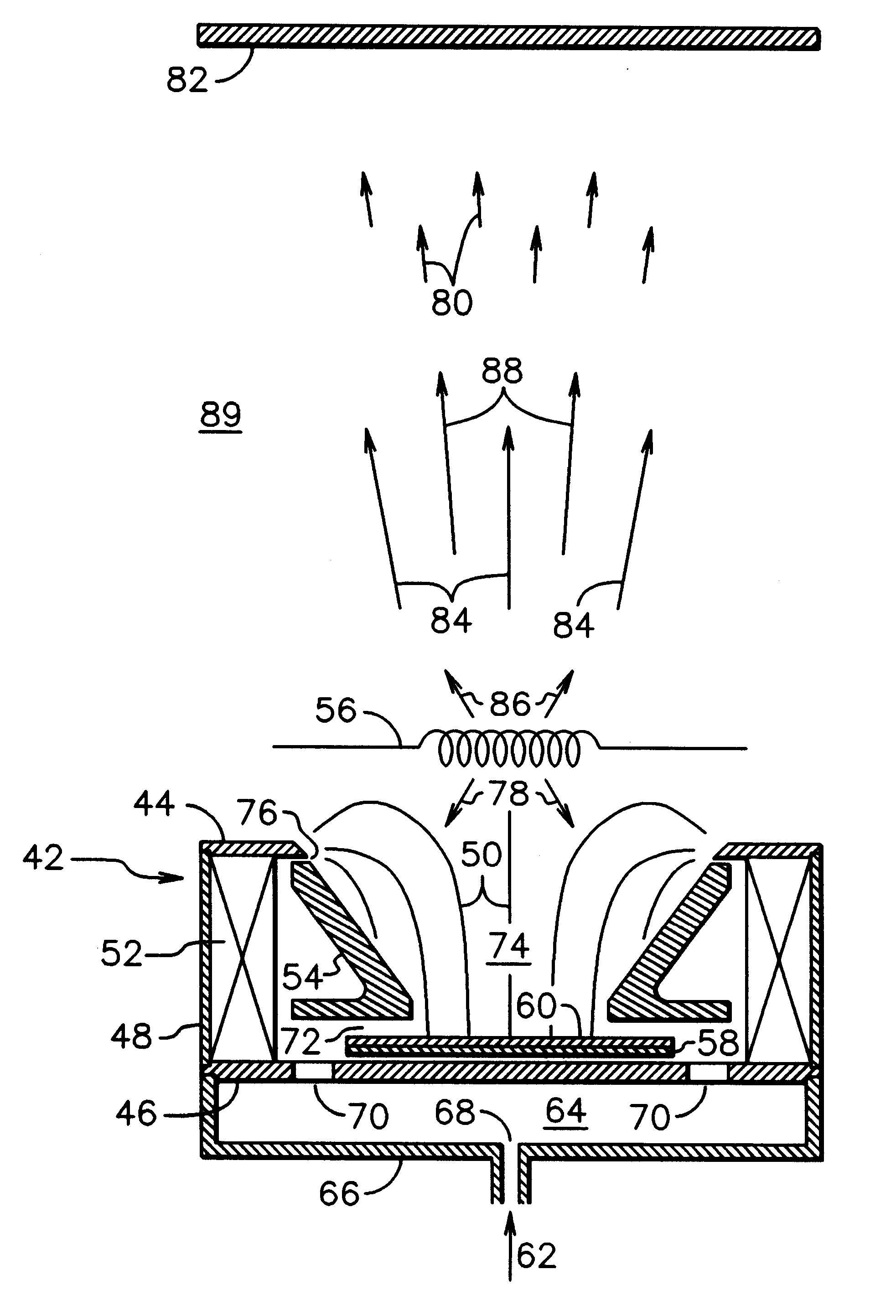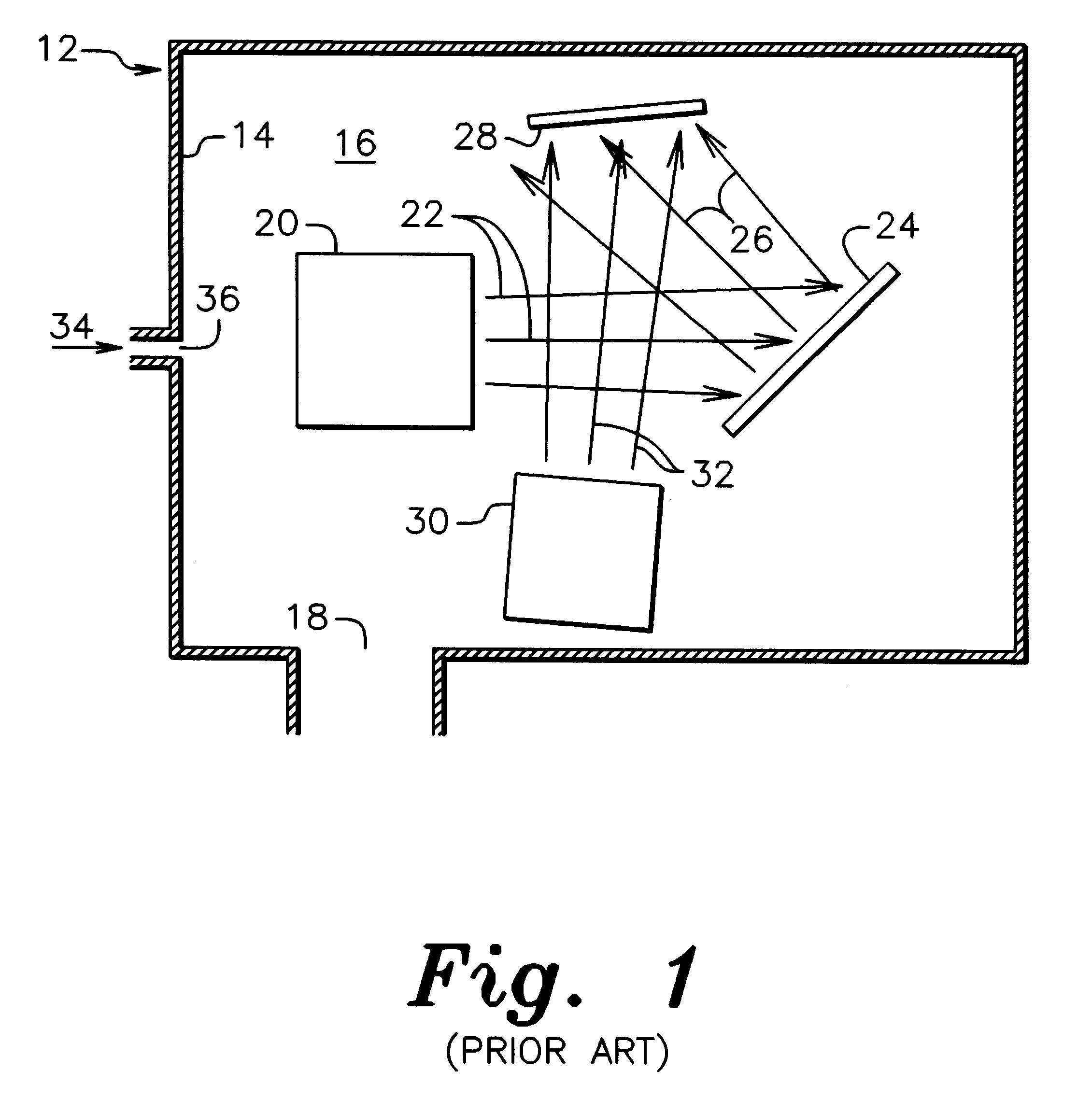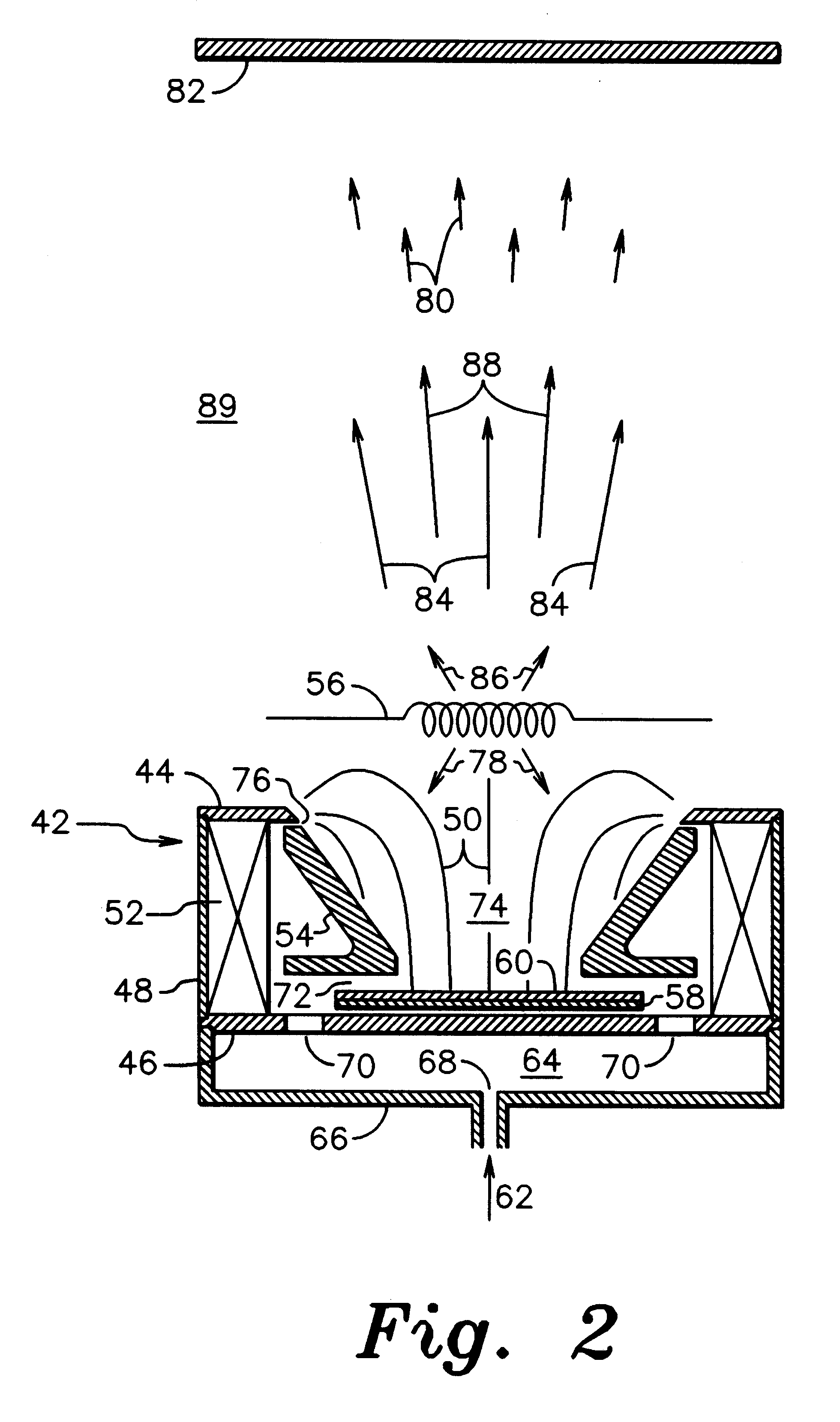Ion assisted deposition source
a technology of assisted deposition and ion, which is applied in the direction of electrolysis components, vacuum evaporation coatings, coatings, etc., can solve the problems of large volume, high cost, and large equipment, and reduce the overall gas flow required, reduce the vacuum pumping requirement, and minimize the damage to the deposited film
- Summary
- Abstract
- Description
- Claims
- Application Information
AI Technical Summary
Benefits of technology
Problems solved by technology
Method used
Image
Examples
specific example
As a specific example of operation, a configuration similar to that shown in FIG. 2 was operated with an inner diameter of the outer pole piece of 38 mm, a separation of inner and outer pole pieces of 39 mm, an anode height of 28.5 mm, an inner anode diameter of 38 mm, and a copper target and its support that together were 3 mm thick and spaced 1 mm from the inner pole piece. The spacing between the anode and the outer pole piece was 1 mm or less. The cathode was a tungsten filament located 12 mm beyond the outer pole piece and with a diameter of 0.51 mm. The heating current to the filament was approximately 20 amperes. With a magnetic field strength at a location both on axis and adjacent to the inner pole piece of 240 Gauss (2.4.times.10.sup.-2 Tesla), a discharge voltage of 60 volts, a discharge current of 2 amperes, and a direct-current target bias of -250 volts, at an argon flow of 42.5 standard cubic centimeters per minute and a background pressure of 4.6.times.10.sup.-4 Torr ...
PUM
| Property | Measurement | Unit |
|---|---|---|
| energy | aaaaa | aaaaa |
| magnetic field | aaaaa | aaaaa |
| voltage | aaaaa | aaaaa |
Abstract
Description
Claims
Application Information
 Login to View More
Login to View More - R&D
- Intellectual Property
- Life Sciences
- Materials
- Tech Scout
- Unparalleled Data Quality
- Higher Quality Content
- 60% Fewer Hallucinations
Browse by: Latest US Patents, China's latest patents, Technical Efficacy Thesaurus, Application Domain, Technology Topic, Popular Technical Reports.
© 2025 PatSnap. All rights reserved.Legal|Privacy policy|Modern Slavery Act Transparency Statement|Sitemap|About US| Contact US: help@patsnap.com



